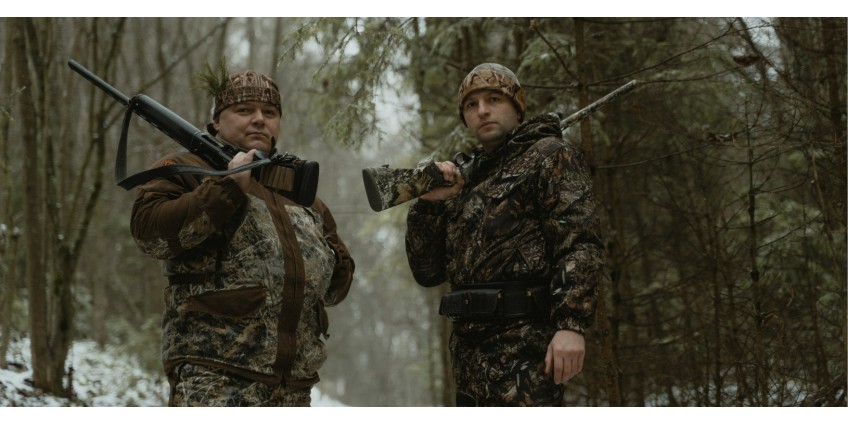
This product is not exportable outside the United States.
By adding this item to cart, you agree and acknowledge the Export Policy and confirm that you are a person in the United States with no intentions to illegally export the device.
This product is not exportable outside the United States.
By adding this item to cart, you agree and acknowledge the Export Policy and confirm that you are a person in the United States with no intentions to illegally export the device.


0

0


Humans tend to sublimate their emotions. Especially negative emotions. All wars were not primarily based on economic, cultural, or political necessity. First of all, the war resulted from sublimated emotions and the development of their realization on a terrifying scale. The consequences of these tragedies keep their echoes on the pages of history books. ut, not only do historical chronicles illustrate to us the results of the rampant human vice. Today's news, unfortunately, shows us that people are not learning their lesson. And the new miserable mental freaks realize their complexes at the cost of the lives of many tens of thousands, not only of their soldiers but also of civilian, peaceful people.
Human nature will inevitably find a similar outlet for the militant and cruel spirit in each of us. For some, these feelings are minimal; for others, like the Russians, they underlie the national mentality and statehood. They are always looking for where to direct this destructive desire, how to destroy and spoil something. So it was in 1939 when they, together with Nazi Germany, began to savagely divide the world and establish their bloody order in Europe. We already wrote about this in our article "The role of the United States in World War II. Lend-Lease as a decisive factor in the victory over Nazism.". Today the situation is the same. And even the world leaders and moral guidelines of the civilized world, like the USA, Canada, and Great Britain, cannot cope with this primitive evil. The reason is not in weakness but, on the contrary, in strength and a colossal emotional and cultural abyss.
The fact is that civilized humanity is well aware of its shortcomings and advantages. And directs its benefits to eradicate weaknesses. Cruelty and the will to fight are the curses we keep within ourselves. This is a necessary evil without which we could not become what we have. Without this, we would not have taken the dominant place in the evolutionary race and would not have closed the food chain on ourselves.
But today, we have a completely different orientation. We crave cosmic discoveries and scientific breakthroughs; we want to swim in the ocean of art, literature, and music. However, the dark side, the "dark fellow traveler," as Dexter Morgan from the series Dexter put it; they are always with us. There is nothing to worry about, as it is inevitable. Our strength lies in the fact that we can suppress what we inherited from our distant ancestors who fought for a piece of mammoth meat. The most effective way was and remained sport. Many philosophers, historians, and sociologists believe that sport arose precisely as an alternative to war, for a peaceful burst of adrenaline and masculine needs. Maybe you are right. We are sure that the modern art of hunting is something that allows you not only to get rid of excesses of primitive aggression. In addition, the balance that a well-planned raid brings is incomparable. It will enable you to touch the cradle of humanity - primeval nature, awaken the hunter in yourself and remind yourself how insignificant a person is in comparison with the monolith of our planet. This draws us to the hunting grounds and excites a slight thrill in the soul as soon as thoughts rush to our favorite gun or night vision device. Hunting is what teaches us, what makes us better and what attracts us.
Hunting is like a sport. And, like in sports, it has its own Hall of Fame. Properly, it is located not in Canton, Ohio. But it has its stars and game changers, either. So, today we'll unveil Johny Unitas, Bart Starr, and Jim Brown from the hunting world.
Just like in the world of professional sports, hunting has its stars, legends, myths, and requirement statistics. But, unlike the same football, it is difficult to determine specific indicators by which success and efficiency can be specified in the art of hunting. The most obvious parameter is the number of animals killed. But, this is too obvious and straightforward, which can hardly be called accurate and objective. For example, how to compare one killed man-eating tiger that terrorized the villagers with the number of killed, for instance, moufflons? Or how many birds would a hunter need to get to equal the shooter who tracked down a killer alligator?
As you can see, the task is not too simple. This is not basketball, where Stephen Curry's three-point shooting statistics are objective and cannot be called into question. And not football, where the algorithm for calculating the effectiveness of a team's defense is much more understandable for an unprepared person; I eat the rules of football myself. But, our Nation is famous for many skills, including love and talent for determining statistical data. We have statistics about everything.

Moreover, it is accurate and objective. But, in this article, we will move away from the classical scheme of data objectification. For us today, the leading indicator will be the place in history that the hunter has taken, thanks to his professional deeds.
Let's make a reservation right away that hunting, from the point of view of the topic of this article, is a raid and prey of animals. That is, unfortunately, famous bounty hunters will not be considered by us. But, on the other hand, this topic intrigues us so much that we do not exclude the appearance of the text "The best American bounty hunters" in the trash. Therefore, follow our updates.
Much to the regret of the fans of Van Helsing and the vampire Lestat, in the form of Tom Cruise. And also, fortunately, fans of Robert Pattinson and The Twilight Saga will not consider vampire hunters. So Blade must wait his turn; today is not his day.
Hunters for coupons and discounts are also not the subjects of our discussion. Since we are not going to take over the territory of the TLC channel.
Separately, I would like to note Big-game hunting. This is a particular, albeit popular, type of hunting, which does not have a specific definition. Often it is referred to as hunting for large animals to obtain rare kinds of meat, particular organs, and body parts of rare animals. Many call it a sport. Often, the ultimate goal of the hunter is to hand over the trophy to the taxidermist to keep his prey intact for many years.
Due to the vagueness of the term Big-game hunting, it is usually understood as raids for animals that are part of the "African Big Five." That is, hunting for an elephant, lion, buffalo, rhinoceros, or leopard. Moreover, as the name implies, it must be in Africa. But, simultaneously, the tiger raids in India also belong to the Big Five. As well as hunting for Indian rhinoceroses.
This subspecies of hunting can be safely distinguished into a separate subcategory. It has its traditions, mythology, culture of clothes, and heroes. And also, their past, which for a modern person, is spoiled by various human rights organizations, may look brutal and wild. We will not delve too deeply into this "sport," especially since we have plenty of ordinary hunting heroes. But, it won't be easy to pass by some of the characters who created their fame in Big-game hunting.
Therefore, today you will find some old-fashioned heroes of crazy, mean times, off-scale amounts of testosterone, and stories that would make George Martin and Stephen King cry.
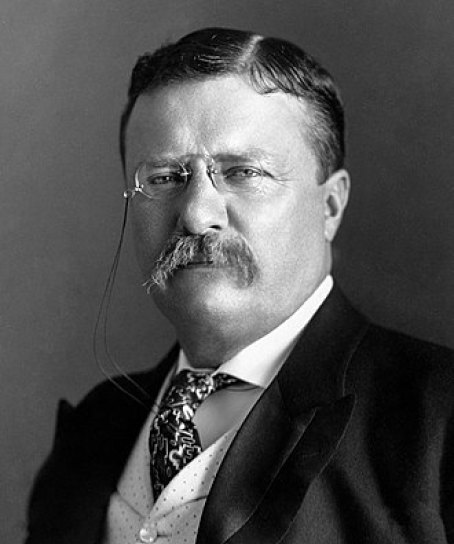
We'll start with him. From a legendary man, America's favorite, one of the best US presidents, a man about whom many books have been written, each of which has such an incredible plot that they can easily compete with the most exciting adventure novels. We will not challenge the multiple biographies of this fantastic man, but we will talk a little about him in the context of our today's topic.
Theodore "Teddy" Roosevelt's whole life was centered around adventure. In addition to the fact that experiences found him, Mr. Roosevelt himself was constantly looking for them. During the ranching days, the future president developed a passion for hunting. By his nature, he did not know how to do something half-heartedly. Hunting was no exception; he immersed himself in it and soon became such a serious professional that he wrote several very detailed and helpful books.
It is difficult to say what features prevailed in the great president. His craving for adventure, hunting, and exploring new, unexplored areas of geography and natural science are so intertwined that they created a monolithic, charismatic figure that still excites the minds and hearts of his followers and ordinary people. We, nevertheless, are inclined to think that the main driving force for President Roosevelt was an unquenchable thirst for knowledge and study of everything new and unknown. Having fallen into the fertile ground of immeasurable charisma, lively mind, and courage, she gave us results worthy of the script of dozens of exciting films.
Even when we designate Theodore Roosevelt as a hunter, the scale of his personality does not fit into such a narrow framework. Even if we expand it to the level - of the famous hunter of the US, in this role, he was known more as a defender of wildlife and explorer than as a marksman, which he certainly was. If we consider only the protection of nature and its research, the President has done so much that hardly anyone can come close to him in this. To him, the honor of creating the United States Forest Service belongs. Also, he transferred almost thirteen percent of US land to the management of this department. He understands the importance of preserving the nature of such a fantastic corner of our planet as the United States was so comprehensive and imperative for Roosevelt that he managed to convince everyone, including his political opponents, of the same. Therefore, during the term of the President, 55 wildlife refuges have appeared, and the area of protected forests has increased by an incredible four times. This is only the visible and most significant part of the tireless work of our hero during his activity. At the same time, the organization of expeditions, scientific conferences, educational programs, and popularization of knowledge about wildlife remained the daily and priority tasks of the President and his administration.
After completing his tenure, Theodore Roosevelt took part in the organization and conducted two significant expeditions to South America. In the Brazilian Amazon and the highlands of Paraguay, intrepid explorers collected artifacts and information for the American Museum of Natural History. The second expedition was a trip to East Africa.
Teddy Roosevelt is famous for many legendary things. From his speech after the assassination attempt, when he was an experienced hunter, he correctly diagnosed his injury and condition and finished the speech that went down in history. And to the fact that he gave his name to the billions of teddy bears played with by generations of English-speaking children worldwide. There is a legend that during one of the hunting raids, a bear was hunted down. He was so exhausted that he was tied to a tree in the end. Roosevelt was asked to shoot the tied animal, but the President refused. Hunting has always remained a matter of honor, a similar struggle between man and wildlife, so he saw neither glory nor victory in such an act. Even though his opponents used that incident to illustrate his weakness, it didn't work. And only strengthened his unique glory.
With all this, our hero was a fantastic hunter. The list of his trophies is impressive. Everything about Theodore "Teddy" Roosevelt's biography is unique, so why should the list of animals he hunted be any different? Let's be honest: not every world zoo can boast such a list of animals as the list of President's trophies. Of course, given the current times and the constant struggle of various organizations for animal rights, this information does not look normal. But let's not forget that times were different. So, the list of Roosevelt wins includes common animal species: grizzly bear, cougar, buffalo, caribou, white and black-tailed deers, shot black bear, big horn sheep, wapiti, moose, pronghorn, mountain goat, hyena, lion, roan antelope, impala, gazelle, peccary, wood deer. But, exotic animals are also included in his collection: jaguar, elephant, black and white rhinoceroses, hippopotamus, kob, zebra, eland, giraffe, lechwe, wildebeest, hartebeest, oryx, gerenuk, tapir, topi. All these trophies were earned on three continents. It is unlikely that anyone can boast of such achievements in our time.
Roosevelt loved and understood weapons. He did not limit himself to any model and, at different times, preferred various rifles and their modifications. In his hands were: a .50-115 Bullard express six shot repeater, a heavy .45-120 Sharps rifle, a Winchester Model 1876 chambered in .45-75 Winchester (some biographers of the President call this weapon his favorite), an M1903 Springfield chambered in .30-03, an English .500 Black Powder Express double rifle, a .40-90 Sharps rifle, a Winchester Model 1895 chambered in .405 Winchester, a .500/450 Nitro Express double rifle by Holland & Holland.
Theodore "Teddy" Roosevelt is a unique person, politician, and hunter. He is one of the few historical figures about whom it is worth reading not one but several books. What is most striking about his biography is that there is no fiction in his dizzying bio inherent in his colleagues. Instead, on the contrary, sometimes it seems that all his adventures are stripped of colors to make them look more believable. And, you don't get the complete picture of this incredible man's life and experiences.
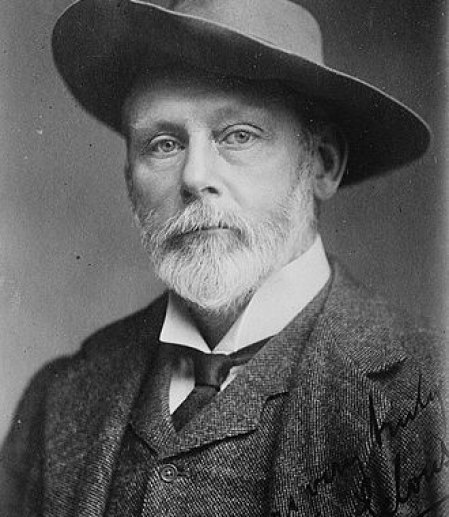
From a global legend, we move on to an African code. The Englishman Frederick Courtney Selous was one of the most successful, legendary, and courageous hunters who hunted on the deadly continent.
The future legend of East and South Africa, British Army Officer, a friend of Cecil Rhodes and Theodore Roosevelt, and prototype of Allan Quartermain from "King Solomon's Mines" by Sir H. Rider Haggard, had little chance of becoming what he became. Born in the middle of the nineteenth century in an aristocratic family, Frederick had to live the measured life of an affluent member of high society. Ideally, he should have become a doctor, as his family wanted. But, what makes a person hungry for adventure, what turns a person into a hunter and explorer, is born with it. With these qualities, Selous was born, who from childhood was drawn to the adventures of Dr. David Livingstone, the natural sciences, and animals. Until a specific time, he listened to his parents and received a quality education in England, Austria, and Germany. The knowledge he received during his youth became an excellent basis for his future activities and created the habit of constantly learning. What he did until his death, satisfying his irrepressible curiosity.
Indiana Jones and the heroes of adventure novels are elementary school students compared to this man who made it his goal to live his life in such a way that everyone would envy her. By the age of 19, he had an education and a clear understanding of what he wanted to achieve in the future. What Frederick didn't have was money. But, as it turned out, a measly 400 pounds is enough to write your name in gold letters in history and make your dream come true. Being an original and charismatic young man, Selous could not choose a trivial pursuit for himself. He wanted to be the best elephant hunter in the world. And he became one.
Moreover, surprisingly, only six years were enough to achieve his goal. By 25, he was known throughout the continent and beyond as the most efficient and professional ivory hunter. But do not rush to conclusions and stigmatize him as a simple killer of elephants. We remind you that then there were completely different times and completely different moral principles. In addition, the interest of the young Englishman was primarily scientific. He carefully recorded the minor details of all his numerous raids, cataloged the animals he met, the life of the tribes, and natural conditions. He was in love with Africa; you will see this later.
Given that Frederick Courtney Selous had firsthand experience with virtually every species of African mammal (which he described in great detail) and knew Africa better than most of us know our street, there was no better candidate to be one of the key players in the legendary Roosevelt's hunting. Expedition of 1909. At this point, he was already a significant figure. Moreover, two years before this expedition, Selous founded a big game hunter's association, "The Shikar Club." Many historians believe this organization was one of the first, if not the first, such an organization that brought together hunters of a particular and dangerous profile.
It should be noted that our hero was a hero in every sense. His victories on the love front are pretty comparable to hunting achievements. The official part of the biography of Frederick Courtney Selous looks quite decent and touching. The respected explorer married at the ripe old age of forty-two. His chosen one was a young, sweet girl Marie Catherine Gladys Maddy. At the time of the wedding, the priest's daughter was 20 years old. Two children were born in the marriage: boys Harold and Bruce. But. Remember we talked about Frederick's boundless love for Africa? So, it manifested itself not only in a passion for nature and exploration of the continent.
Today we can talk about at least three children that Selous had from three different African women. Although, according to rumors, there are many more. But, Magdalen's daughter and two sons, Frederick and John, received their fair share of attention from the alleged father. Even though Frederick Selous never officially recognized them as his children, he paid for their education, and after his death, he bequeathed part of the property in Harare.
As you understand, our hero was anything but an ordinary, boring person. There is no point in detailing his trophies and their number. The fact that this Englishman has become one of the symbols of Africa, and some locations are named after him, speaks for itself. He was original, charismatic, and self-confident in everything. For example, the choice of his favorite weapon was not original or extravagant; it is difficult to call it ordinary. Frederick Courtney Selous favored the guns of London's Holland & Holland and Gibbs of Bristol while constantly experimenting with new cartridges and gunpowder.
Such a large and majestic person could not die in his bed or on the ocean, drinking a cocktail. He could only die in battle with weapons in his hands. This happened in early 1917, during the Battle of the Rufiji River. Our hero was killed in a fight with the 25th Royal Fusiliers during a protracted conflict between the German colonials and a bush. The place of his death is located on the territory of modern Tanzania and bears his name - Selous Game Reserve.
Adventurer, great hunter, explorer, and naturalist lived such a colorful life that its brilliance illuminates the image of Frederick Courtney Selous today. Perhaps his modest grave is decorated with only a dull bronze tablet. Agree that this is very symbolic.
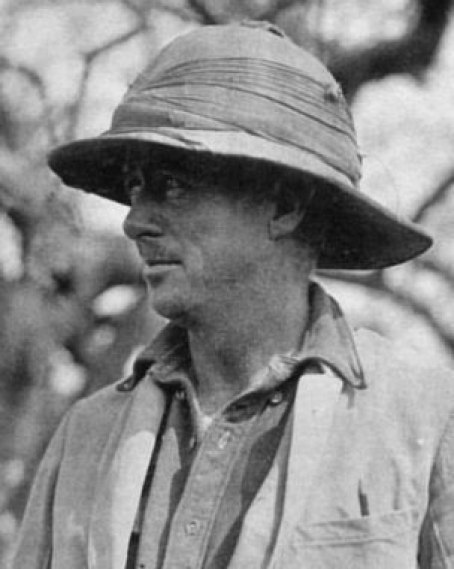
We can safely say two things: you have probably heard of Philip Hope Percival, and you hardly know who it is. Today we are talking about the most famous and successful hunters in history. It's hard to say if Percival is one of them, but it's not his fault because our list contains real superstars. But what can be said with certainty is that our hero was a unique businessman who knew how to use all his skills to the maximum and was able to monetize them, turning them into a successful business.
Abilities and skills are only an integral part of success. Any successful businessman will confirm this to you - from Walt Disney and Henry Ford to Mark Zuckerberg and Elon Musk. Luck, the ability to be in the right place, and animal charisma - this is what are important no less than intelligence and business acumen. Philip had all this in abundance.
His rise began at 23 when he was lucky enough to work with Hill cousins in organizing a lion hunt for Theodore "Teddy" Roosevelt (as you can see, not a single significant hunting event of his time was without the legendary president). Sir Alfred Pease organized that hunt; it was the big leagues. Those events shook the world of the young Percival, gave them excellent acquaintances, and made it clear what he wanted to connect his life with.
The beginning of a fantastic journey was the desire to establish their own business. In the choice of the sphere of earnings, Philip approached creatively and decided to grow ostriches. Where is the best place to raise ostriches? The answer was evident for the early twentieth century: British East Africa.
This plan didn't look very reliable in terms of a money-back guarantee. After the farm started working, it turned out that ostriches are a real delicacy for local lions. They came to the Percival farm like weary managers on a Friday night at Hooters. Yes, and they behaved accordingly.
Life left little choice for the young farmer. Here one could either come to terms with the loss of all his living assets or pick up a gun and explain to the impudent lions that they were not welcome on the farm. As you understand, our hero's choice fell on the option of a gun.
This story has become not only an example of courage and readiness to defend one's own. She is a vivid illustration of the idiom about what to do with the lemons that life gives you. Philip Percival's war with the lions has become so mundane that it has become a boring routine. Therefore, he was pretty surprised when he found that other people were watching him with interest, and many were even envious that he had to hunt constantly. The solution was obvious - Philip began to take clients who wanted to get a problematic trophy under the guidance of an experienced farmer. Such raids were not free.
Immediately it became clear that such a business is much more profitable than breeding ostriches. Therefore, the priorities quickly shifted towards the organization and support of hunting tours. And that same safari, with the participation of everyone's favorite Teddy Roosevelt, was an incredible advertisement for this type of adventure. Since then, crowds of tourists have begun to arrive in Africa, wishing to see the local nature and get a valuable trophy. And those directly involved in organizing the legendary expedition had no problems with clients and chose for themselves who and for what amount to accompany in the raid.
Philip Hope Percival stood out even in this small list of hunters. He became the highest paid, charismatic and famous hunter on the continent. Well, the high point for him was the safari he organized for the great Ernest Hemingway. The writer was so impressed with his guide that he made him the prototype for one of his characters in The Green Hills of Home. Moreover, Ernest was so impressed with his new friend that he returned to Africa twenty years later to conduct another hunt with him. And he wrote the story "True at First Light" about it.
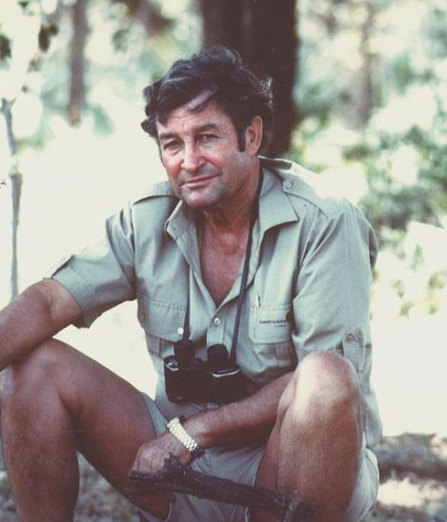
The hunter is most often a vocation. Few of the great hunters became them simply by making such a decision. This is what should be in your blood, what should be in your brain. This is a calling, not a profession. Very well, this statement illustrates the life of Harry Selby.
He was born in South Africa, which largely predetermined his fate. When he was three years old, his family decided to take up farming and moved to Kenya, where a forty-thousand-acre site was created for raising cattle. It is quite natural that in those days, there could be no question of enclosing such a vast territory with a reliable fence. Firstly, the routes of various animals inhabiting Africa ran along this land. For example, the seasonal migration trails of elephants just ran through the farm. Secondly, local predators quickly realized that many delicious antelopes could be found here. Therefore, an exhausting war between leopards, lions, and desperate farmers began very quickly. The battle is not for trophies but the sake of survival.
As for Harry, the boy could not stay away from the processes that affect the survival of his own family. At age 8, he began to forage using a .303 British military rifle. Such weapons were considered a child's toy, so as soon as the guy could take up more serious weapons, he became an essential part of his family's massive campaign to protect their livestock.
I must say that Harry was an incredibly talented and intelligent guy. Hunting small game and birds with a .303 British military rifle, he constantly had to avoid large predators for whom the thin boy was just a snack. This taught him to be careful. He studied and assimilated the habits and characteristics of the animals surrounding him because this was the key to survival. In addition, he was attracted by local trackers and hunters. He carefully watched them and firmly remembered all their tricks and knowledge, which they willingly shared with a curious guy.
All this naturally prepared Harry Selby for hunting large and dangerous games. He was so ready that he went on his first raid as a teenager. He teamed up with his cousin, armed with just a purchased Westley Richards .425 caliber rifle (brother had his own .450 double gun). He traveled to Kenya's Northern Frontier District to use the elephant hunting license they had also purchased. Of course, the guys were accompanied by a local tracker. But, here is the fact that they got the elephant, having received an elephant tusk weighing 270 pounds - it was only their merit. It is worth noting that decades later, in the 60s, Harry brought his clients to this area, amazed at the effectiveness of hunting here.
There was no reason not to start making money doing what you do best. That is why, when in 1951, the famous writer Robert Ruark decided to go hunting in Tanzania, along with his wife, the best was sent to accompany him. The best was Harry Selby. And, at the end of the forties, our hero joins the famous Ker & Downey Safaris and becomes one of the best trackers and hunters in the company.
Selby and Ruark became close friends during this trip. This journey resulted in not only the book "Horn of the Hunter," which is a real bible for hunters and safari fans. It has become a kind of ode to life in Africa, its exceptional nature, and its unique people endlessly in love with the continent.
And, again, luck was with Harry Selby. The landmark trip with Ruark and his wife not only inscribed Harry in history and literature. Developing a brighter, more powerful, and more effective advertisement was challenging. At that time, there was not a single hunter who would not dream of hunting under the guidance of the famous Selby. Do you know how popular he was? Hunting with him was booked four years in advance! This was the case when money turned out to be a secondary factor.
Selby and Ruark became true friends. But, this was a by-product of my friendship with the writer. Sometimes, the writer visited his African friend twice a year. One of those trips resulted in another book, this time the fictional novel Something of Value, but based on the life and adventures of Harry Selby himself.
This idyllic existence continued throughout the fifties. But, in the early 60s, the scale of poorly controlled extermination of rare animal species in Kenya began to acquire completely unacceptable proportions. Therefore, with the support of international organizations, the government decided to radically change the established system, which cast doubt on the possibility of hunting in the future.
Harry Selby, who could not imagine his life without a safari, was forced to move to Botswana, where he reunited with Ker & Downey. It is worth noting that the established hunting system was in doubt in Kenya and throughout Africa. Most of the world community, including even hunters, understood that the damage caused by the safari in its current form is too massive and needs to be changed and controlled. So in Botswana, Selby and their partners took a different route and secured a 10,000 square mile concession of hunting grounds in the northern Okavango Delta. This deal with the government was a compromise, allowing the hunters to continue doing what they love. But, it was clear that the world would no longer be the same, and it was necessary to think about how to live on.
For the next two decades, the process continued. The need to continue to earn and hunt has given rise to a new type of photo hunting. Safari companies began to build fixed camps and campgrounds. And business began to focus not on daredevils armed with the best hunting rifles but on unprepared tourists who wanted to see lions and elephants in their natural habitat. Whether this is good or bad is up to you. But, Africa could no longer live by the old rules, which made it only a resource source, is a fact.
The amount of concession land was increased to 90,000 square miles. The government blocked the increase in hunting grounds, and multiple safari companies were forced to share limited land, focusing more on inexperienced and unprepared tourists with cameras.
This very accurately reflects the life of Harry Selby himself. He retired from hunting. For many reasons, but one of the first was age. This did not affect his sincere and deep love for the nature of Africa. He stopped hunting but did not stop camping, sleeping in the open, and going far into the savannah, where there were no people and tourists.
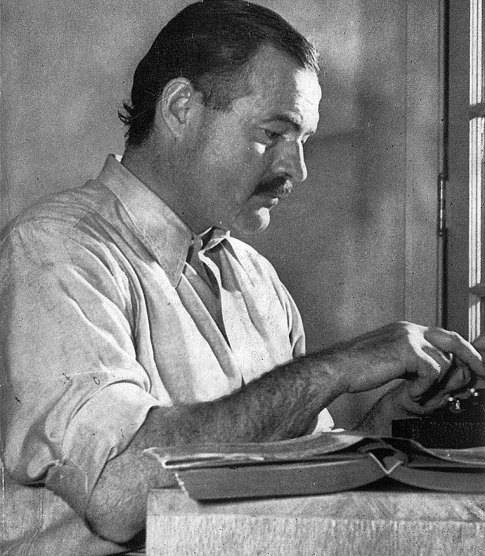
It is hardly possible to put Ernest Hemingway on a par with such unique hunting specialists as Frederick Courtney Selous, Philip Hope Percival, or Harry Selby. Of course, he was, first and foremost, an incomparable writer and journalist. Even as an athlete, he was more famous than a hunter. But, in terms of the influence of the art of hunting on life and career, Hemingway's biography is unique.
He took his first steps in this business at four, thanks to his father. He instilled in Ernest a love and culture for fishing and hunting, which he carried throughout his life full of adventures and incredible events. The great writer not only frequented the Gulf Stream area, fishing for tuna and marlin. He hunted in different parts of the world, from the USA to East Africa. Various animals became his prey, most of which are now forbidden to hunt. Zebra, kudu, rhinoceros, buffalo, antelope, gazelle, brown and black bears, deer, wapiti, bighorn sheep, leopard, and lion. All this is a list of his victories and achievements.
But, his primary victory, the main result of all his raids, expeditions, and safaris, were not trophies but novels and stories. The adventures he experienced during his travels and the exciting and unique people he met there became the basis of his extraordinary literary heritage.
Possessing good taste and a peculiar way of thinking, he transferred these qualities to his weapons. His arsenal is not the most obvious but very interesting. A .30-06 Springfield, a 6.5x54mm Mannlicher-Schönauer by Griffin & Howe, a 10.75×68mm Mauser, and a .470 Nitro Express double rifle by Westley Richards and .22 Rimfire, which was discovered to him by his friend and guide Percival.
Perhaps Ernest Hemingway was not the most successful and successful hunter. Still, like no one else, he understood hunting philosophy, and this writer gave this art a unique flair for adventurism and sophisticated adventures.
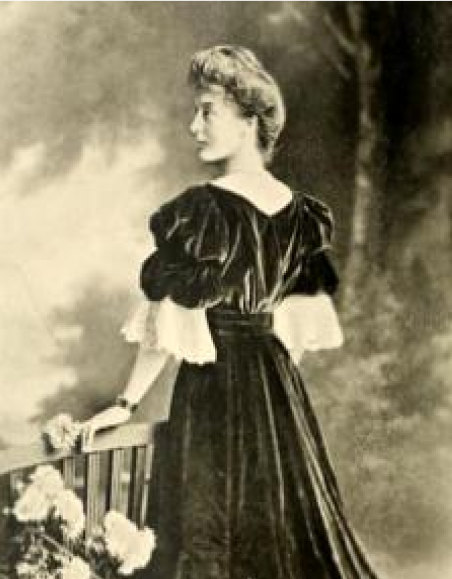
We consider the biographies and achievements of the heroes-hunters in great detail, but something is missing in our story. Namely: a female hunter. That is why we would like to recall Agnes Elsie Diana Herbert, who has an incredible biography. Moreover, all her adventures took place at a time when the role of women in society was minimal and artificially underestimated. While the suffragette movement was beginning to emerge, and it wasn't easy to imagine a woman in trousers, Agnes Herbert bravely explored worlds that not every man would dare to go to.
It must be said that the role that society imposed on a woman was always alien to Agnes. She grew up on the Isle of Man, which was quite dull but, at the same time, traditional enough to oppress the free spirit of a brave girl. She rebelled against the archaic patriarchal foundations from childhood. She was constantly looking for opportunities to break out of the boundaries set in her birthplace. And here, it is essential to note that her family has become a significant help to her.
As soon as the first opportunity to plunge into adventure appeared, she and her cousin Cecily Baird went to the Canadian Rockies. The desire to learn new things and live interestingly was so strong that the girls were ready for anything. So they took on the tedious job of teaching Chinese kitchen workers. It certainly doesn't sound intriguing. But, do not forget where our heroine was. Wildlife in the Canadian Rockies constantly challenged the people who ventured there. That is why Agnes Herbert was very quickly drawn into the art of hunting.
The return to Britain was not as joyful an event as the girl expected. Accustomed to the constant excess of adrenaline, she felt like a stranger in life's pastoral and measured rhythm. Her cousins shared these feelings. They, in secret from everyone, began to plan a glorious trip to the mysterious and dangerous Somaliland. The persistence and desperation of young people made it possible to realize their dream in 1906.
Not everyone in the girl's family considered her obsession with hunting and adventure inappropriate for the status of a young lady; there were family members who ardently supported and encouraged this lifestyle. For example, Uncle Agnes provided his extensive collection of weapons for a visit to distant Africa. This collection included: a .35 Winchester repeater, .500 Black Powder Express double rifle, 12 double-barrelled shikar pistols, and 12 bore rifles. The latter gun was Agnes Herbert's favorite; she used it with soft spherical bullets and 51⁄2 drams and considered it the perfect choice for dealing with large dangerous predators.
That trip was tragic. The team lost several people who were torn to pieces by predators. Despite the rich trophies and many adventures, it was difficult to call the expedition easy. After such a brutal and bloody expedition, any other adventurer would have retired, but our heroine was not like that. Soon, Agnes and her husband went to Alaska. Already seasoned hunters, they armed themselves with a .375 Flanged Nitro Express double rifle, .450 Nitro Express rifle, and .256 Mannlicher. The journey was successful and brought many trophies in the form of killed walrus, caribou, and bears. Mainly due to the success of this expedition, the couple undertook another significant journey, this time to the Caucasus. They took bear, ibex, wild boar, tur, and deer with 12-bore shotguns and .256 Mannlicher rifles.
Based on the results of her trips, Herbert wrote reports that were published and received considerable popularity. This made her a well-known writer and publicist. Until the end of her life, she was a respected member of many societies, some of which she led, and a significant member of the aristocratic community.
Talking about such people is a great pleasure and a lot of trouble. Each of our heroes is such a monolithic personality, such a charismatic and multifaceted person that it is tough to keep oneself within the framework of a small article and limit oneself within its framework. Each of them deserves a separate big book. And not one!
Moreover: we have told about very few. Therefore, we want to continue our story in the next part of our article.
Table of contents